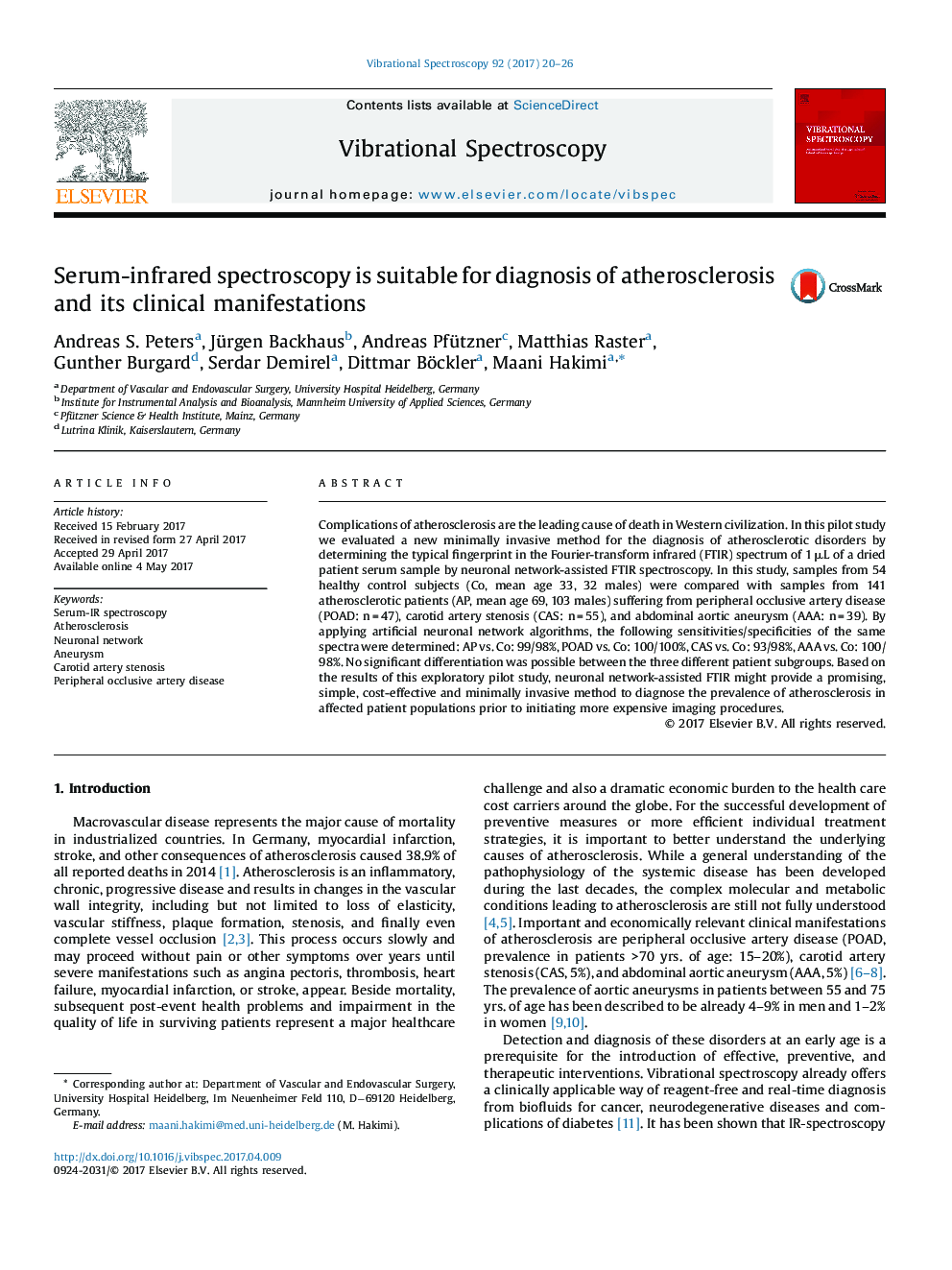| Article ID | Journal | Published Year | Pages | File Type |
|---|---|---|---|---|
| 5141889 | Vibrational Spectroscopy | 2017 | 7 Pages |
Abstract
Complications of atherosclerosis are the leading cause of death in Western civilization. In this pilot study we evaluated a new minimally invasive method for the diagnosis of atherosclerotic disorders by determining the typical fingerprint in the Fourier-transform infrared (FTIR) spectrum of 1 μL of a dried patient serum sample by neuronal network-assisted FTIR spectroscopy. In this study, samples from 54 healthy control subjects (Co, mean age 33, 32 males) were compared with samples from 141 atherosclerotic patients (AP, mean age 69, 103 males) suffering from peripheral occlusive artery disease (POAD: n = 47), carotid artery stenosis (CAS: n = 55), and abdominal aortic aneurysm (AAA: n = 39). By applying artificial neuronal network algorithms, the following sensitivities/specificities of the same spectra were determined: AP vs. Co: 99/98%, POAD vs. Co: 100/100%, CAS vs. Co: 93/98%, AAA vs. Co: 100/98%. No significant differentiation was possible between the three different patient subgroups. Based on the results of this exploratory pilot study, neuronal network-assisted FTIR might provide a promising, simple, cost-effective and minimally invasive method to diagnose the prevalence of atherosclerosis in affected patient populations prior to initiating more expensive imaging procedures.
Related Topics
Physical Sciences and Engineering
Chemistry
Analytical Chemistry
Authors
Andreas S. Peters, Jürgen Backhaus, Andreas Pfützner, Matthias Raster, Gunther Burgard, Serdar Demirel, Dittmar Böckler, Maani Hakimi,
